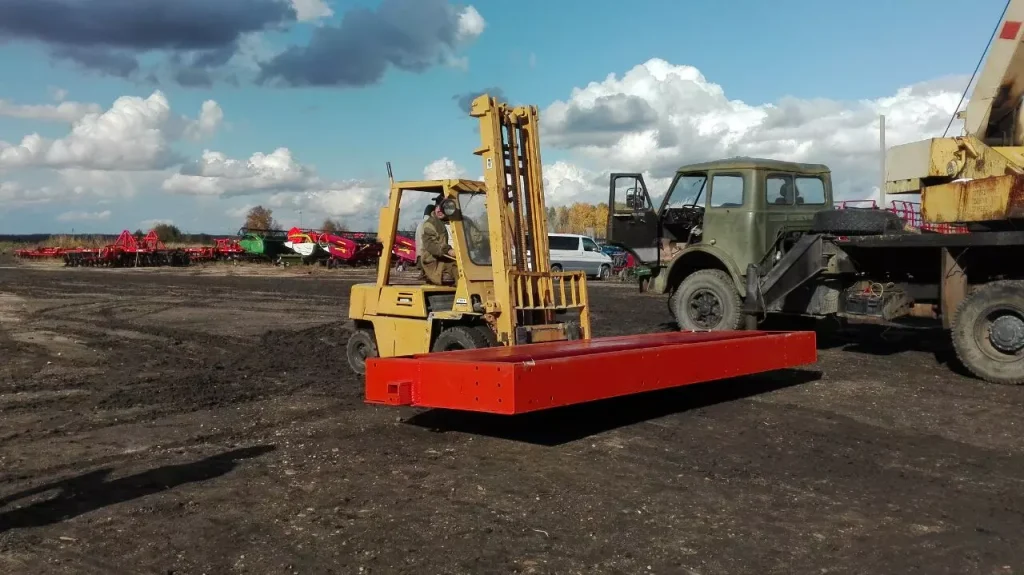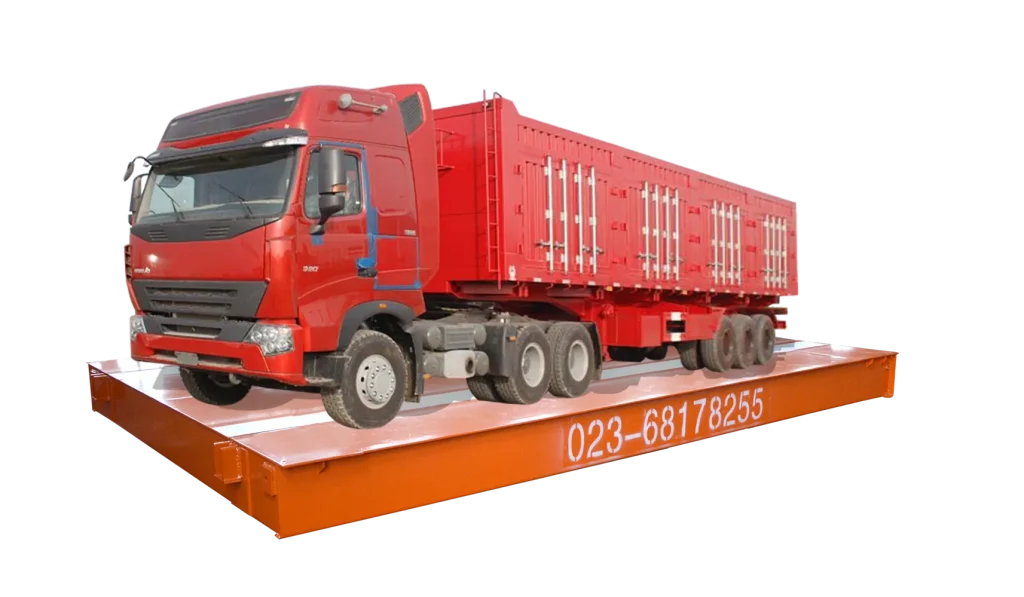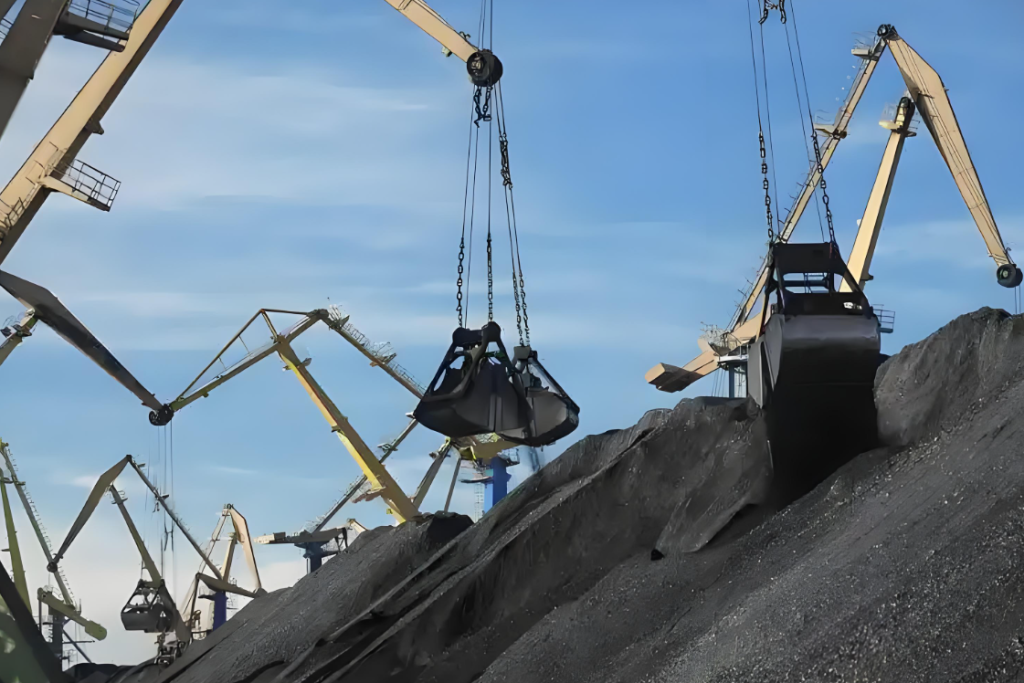Belt Feeder: Working Principles, Efficiency Optimization, and Application
Belt feeder is a kind of belt scale, an essential component in a variety of industrial processes, with their primary purpose being the controlled conveying of bulk materials. Before you purchase a belt feeder, you can learn how it works, optimize its efficiency, and explore its many applications to maximize its usefulness in different industries.
How Belt Feeder Works?
Belt feeder, also known as weigh belt feeder, is a mechanical equipment that conveys materials by friction drive on a certain conveyor line. It is widely used in mining, metallurgy, ports and other industries, mainly for conveying loose materials or finished items. Belt conveyor is widely used because of its simple structure, large conveying capacity and easy maintenance. The following will be elaborated in detail from the structure and working principle of belt conveyor.
Structural Composition
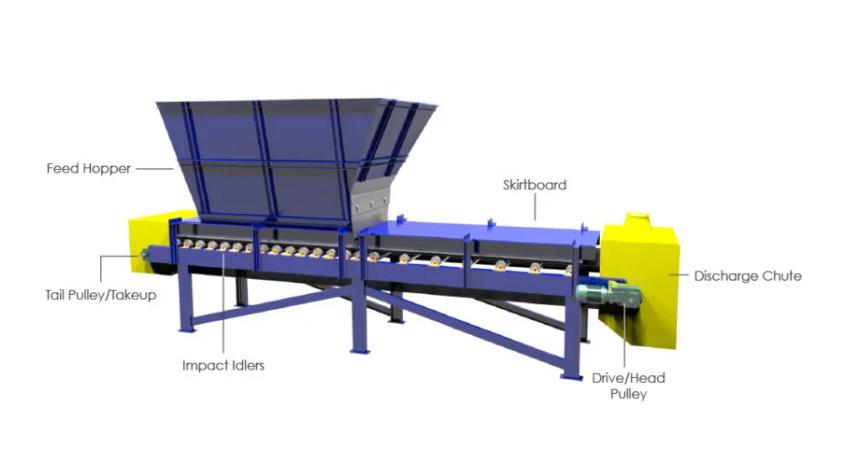
- Conveyor belt: The conveyor belt is the core part of the belt conveyor, usually made of rubber or synthetic materials, with high strength and wear resistance. Conveyor belts are available in various types and specifications, which can be selected according to specific application requirements.
- Drive device: The drive device provides power for the belt conveyor, usually including a motor, a reducer, etc. The motor transmits the transmission force to the drive roller through the reducer to make the conveyor belt move.
- Support structure: The support structure is used to support the conveyor belt and maintain the stable operation of the conveyor belt. It is usually composed of a steel frame or frame with sufficient strength and rigidity to withstand the weight of materials and equipment.
- Load component: The load component includes rollers, rollers, etc. to ensure smooth transmission of materials during transportation.
- Guide device: The guide device includes guide rollers, guide rollers, etc., which are used to guide the movement direction of the conveyor belt and prevent the conveyor belt from deviating from the track.
- Braking device: The braking device is used to control the speed of the conveyor belt to slow down or stop it. Common braking devices include resistance brakes, hydraulic brakes, electromagnetic brakes, etc.
- Protective devices: Protective devices include protective covers, safety switches, emergency stop buttons, etc., which are used to ensure the safety of operators and equipment.
Working Principle
- The working principle of the belt conveyor is to use the continuous movement of the conveyor belt to transport materials from one point to another.
- Specifically, when the drive device is started, the drive roller drives the conveyor belt to move, and the materials loaded on the conveyor belt move with it. During the conveying process, the roller supports the conveyor belt to keep it in a stable operating state. At the same time, the tensioning device can adjust the tension of the conveyor belt to meet the requirements of the material and transportation distance.
- The belt conveyor has the characteristics of simple structure, easy maintenance, stable and reliable operation, etc., and is suitable for the continuous transportation of various bulk materials.
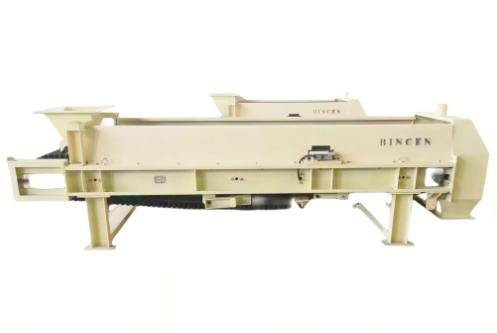
Operation Process
The working process of the belt conveyor can be divided into the following steps:
- Starting: The motor drives the roller to rotate, and the roller drives the conveyor belt to start moving.
- Conveying: The material is placed on the conveyor belt, and as the conveyor belt moves, the material is transported to the destination.
- Tension adjustment: The tensioning device automatically adjusts the tension of the conveyor belt to prevent the conveyor belt from being too loose or too tight.
- Supporting function: The roller supports the conveyor belt, reduces friction resistance, and ensures smooth operation of the conveyor belt.
How to Optimizing the Efficiency of Belt Feeder
In order to improve the efficiency of the belt feeder, optimization can be carried out from multiple angles. The following is an analysis and suggestions based on the search results.
- Equipment structure optimization
The optimization of the equipment structure of the belt feeder is the basis for improving efficiency. Optimization measures include but are not limited to:
- Transmission efficiency improvement: Use new reducers, low-energy drive and high-efficiency transmission technology to reduce energy loss.
- Roller improvement: Optimize the roller design, reduce friction, reduce energy consumption, and improve conveying efficiency.
- Lightweight material application: Use lightweight materials to reduce equipment weight and drive energy consumption.
- High-efficiency wear-resistant technology: Use high-efficiency wear-resistant materials to extend equipment life and reduce maintenance costs.
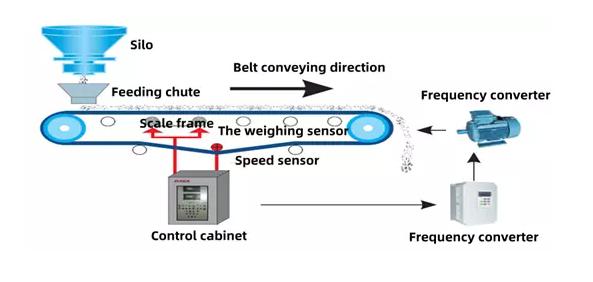
2.Control system optimization
Advanced control systems are crucial to improving the efficiency of belt feeders. Specific measures include:
- Intelligent control: Use intelligent control systems to realize intelligent and automatic control of conveyors, and automatically adjust the operating speed according to material status and workload.
- Various frequency speed regulation technology: Use various frequency speed regulation technologies to improve engine efficiency and reduce energy consumption.
- Soft start and stop: Select appropriate soft start and stop curves to significantly reduce the safety factor of the conveyor belt and reduce equipment wear.
3. Energy-saving materials and technology applications
- Energy-saving materials: Apply energy-saving materials, such as lightweight materials, to reduce equipment weight and energy consumption.
- Friction reduction technology: Use new transmission belts to reduce friction, reduce energy consumption and improve conveying efficiency.
Generally, the efficiency optimization of belt feeders is a systematic project involving equipment structure, control system, materials and technology applications. By comprehensively applying existing research results and technologies, the efficiency of belt feeders can be effectively improved, energy consumption can be reduced, production efficiency can be improved, and strong support can be provided for the development of related industries. The future development trend will be the continuous improvement of intelligence and automation, as well as environmental protection design that pays more attention to energy saving and emission reduction.
What are the Industrial Applications of Belt Feeder
- Food processing industry: In the food processing industry, belt feeders are mainly used to transfer raw materials or semi-finished products from one workstation to another. For example, it can feed flour, sugar or other dry ingredients into a mixer for mixing, or it can convey the mixed dough or batter to a molding machine for further processing. In addition, belt feeders can ensure the uniform distribution and stable supply of materials, thereby ensuring production efficiency and product quality.
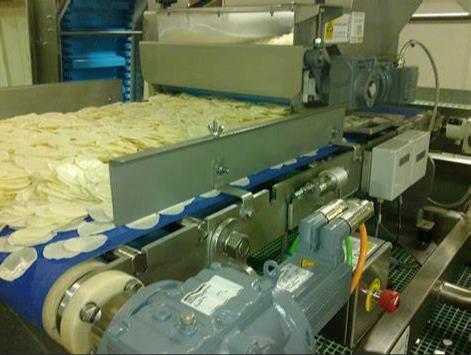
- Automobile manufacturing: In the automotive manufacturing industry, belt feeders are often used to convey raw materials such as metal sheets and parts. These materials are accurately delivered to welding or assembly lines through belt conveyor systems to achieve efficient automated production. The use of belt feeders reduces the need for manual handling and labor intensity, while also improving production accuracy and safety.
- Electronic assembly industry: In the electronic assembly industry, belt feeders are often used to deliver small components such as capacitors, resistors, chips, etc. to designated locations. Since electronic components are usually small in size and high in value, the accuracy and stability of the feeder are extremely high. Belt feeders can ensure the correct placement of these key components, which is essential to ensure the performance of circuit boards.
- Pharmaceutical Industry: In the pharmaceutical industry, belt feeders are responsible for conveying raw materials such as drug powders, granules or liquids to reactors or filling machines. The reliability and non-contamination of belt feeders are critical to maintaining drug quality and avoiding cross-contamination. Especially in powder handling, belt feeders need to have good sealing performance and precise metering capabilities to ensure the reproducibility of drug formulations and consistency of dosage.
Belt feeders play an important role in various industrial fields. The special needs of different industries have also promoted the continuous progress and improvement of belt feeder technology. With the continuous development of industrial automation, the application scope and technical level of belt feeders will continue to expand and improve.

